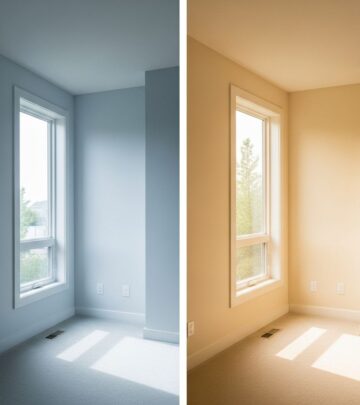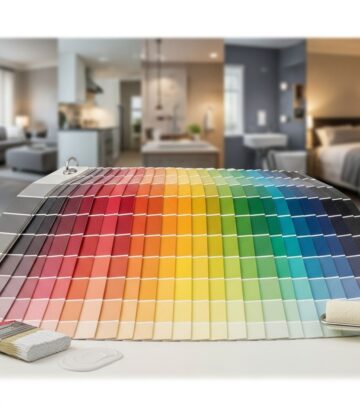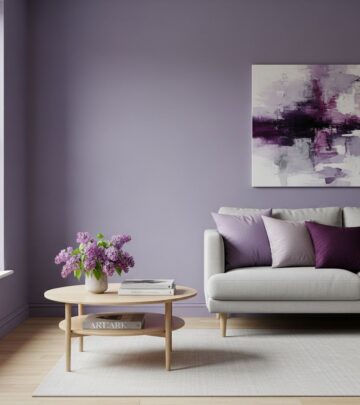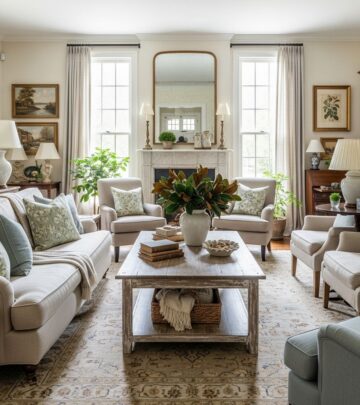DIY Room Divider Ideas: 5 Creative Ways To Transform Your Space
Transform your open floor plan with these innovative DIY room divider ideas that combine function and style
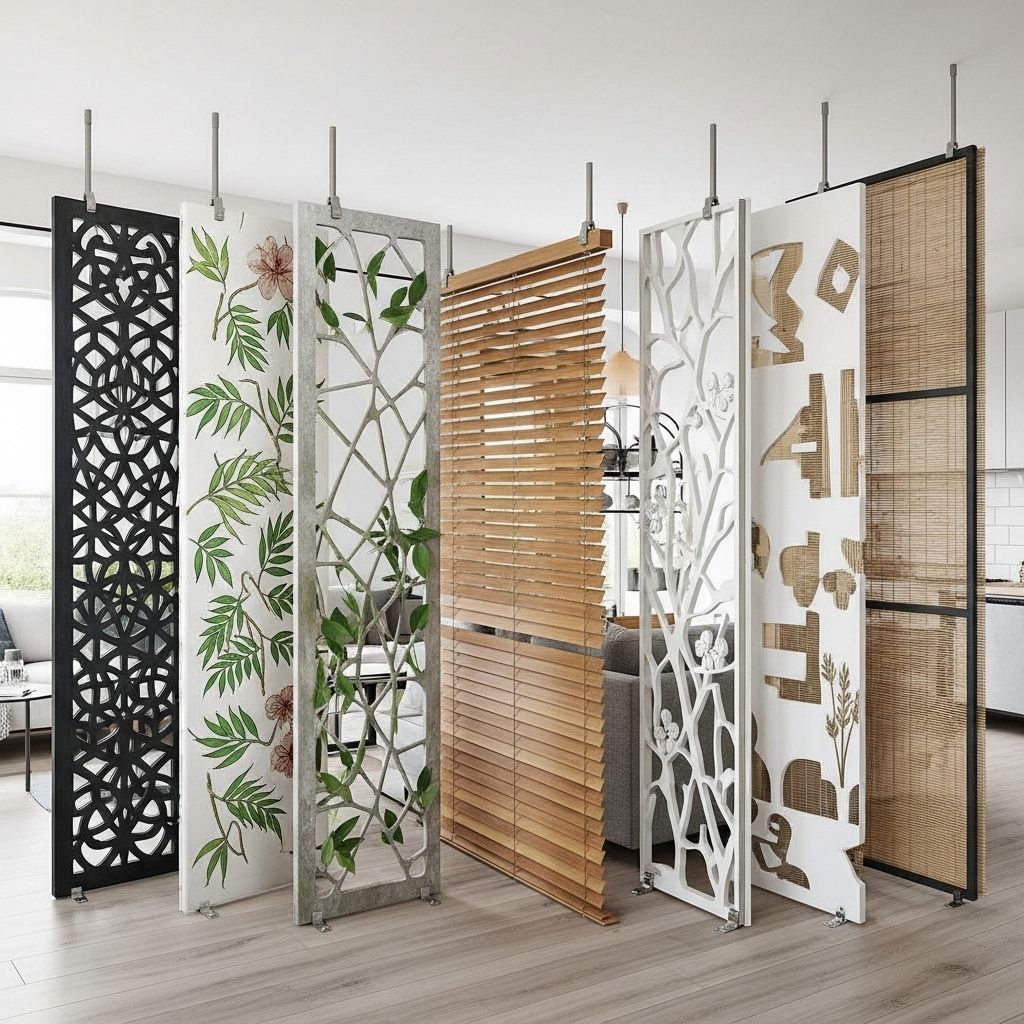
Image: HearthJunction Design Team
Introduction to DIY Room Dividers
Room dividers offer a versatile solution when you need to create separate spaces within your home without the permanence of walls. Whether you’re living in a studio apartment, have an open floor plan, or simply want to define different functional areas, DIY room dividers can transform your space while adding a personal touch to your décor. These projects range from simple afternoon crafts to more involved weekend undertakings, making them accessible regardless of your skill level or budget.
Room dividers, also known as partitions, screens, or panels, serve multiple purposes beyond just dividing space. They can provide privacy, hide storage areas, reduce noise, add decorative elements, and even improve the flow and functionality of your home. The beauty of creating your own room divider is that you can customize it to perfectly match your space, needs, and personal style.
Types of DIY Room Dividers
Before diving into specific projects, it’s helpful to understand the different types of room dividers you can create. Each style offers unique benefits and can be adapted to suit various spaces.
Freestanding Room Dividers
These self-supporting dividers can be moved and repositioned as needed, making them ideal for renters or those who like to frequently change their space. Traditional folding screens are the most common type, but shelves, bookcases, and other furniture pieces can also serve as freestanding dividers. These options provide flexibility and often offer additional storage or display space.
Ceiling-Mounted Room Dividers
For a more substantial division that still maintains an open feel, ceiling-mounted options like curtains, sliding panels, or hanging elements create a semi-permanent solution. These dividers can be pushed aside when you want an open space and pulled closed when privacy is needed. They’re particularly effective in lofts, studios, or homes with high ceilings.
Built-In Room Dividers
If you’re looking for something more permanent, built-in dividers like partial walls, large bookcases, or custom cabinetry can define spaces while maintaining an integrated look with your home. These options often require more skill and investment but provide a polished, architectural element to your space.
Creative DIY Room Divider Ideas
Woven Rattan Room Divider
A woven rattan divider offers a bohemian touch while allowing light to filter through. This project involves customizing a basic rattan screen with colorful yarn to create a unique, textured piece.
To create this divider, you’ll need:
- A rattan room divider (you can find these at furniture stores or online marketplaces)
- Yarn in various colors
- Scissors
- Thick yarn for added texture (optional)
The weaving process is straightforward but does require patience:
- Start with a single strand of yarn on one end of the rattan
- Weave it back and forth (in front and behind) each strand of wicker
- Once you reach one end, repeat the weaving until you get back to your starting side
- Tie a knot to secure the yarn
- Cut excess yarn and repeat until you achieve your desired design
- Consider adding vertical strands woven into the horizontal ones for added dimension
This project allows for endless customization through color combinations and weaving patterns, making it perfect for complementing your existing decor.
Ceiling Track Curtain Divider
For a soft division that can be easily opened or closed as needed, a ceiling track curtain divider offers flexibility and style. This solution works particularly well in studio apartments, shared bedrooms, or to separate a home office from a living space.
A premium heavyweight ceiling track room divider kit comes complete with everything you need, including the track system, rollers, and often the curtains themselves. Installation typically involves mounting the track to your ceiling, hanging the curtains, and adjusting as needed. The beauty of this option is the wide variety of fabric choices available, allowing you to select colors, patterns, and textures that complement your decor.
If you’re working with a tighter budget, you can create a similar effect by installing basic curtain rods on your ceiling and using standard curtain panels. Look for heavier fabrics if you want more sound dampening and privacy, or lighter, translucent options if you’d prefer to allow light to pass through.
Three-Panel Decoupage Divider
Upcycling an existing three-panel room divider with decoupage creates a personalized piece that can serve both decorative and organizational purposes. This project is perfect for hiding storage areas or creating a backdrop for video calls or photography.
For this project, you’ll need:
- A three-panel folding screen (new or secondhand)
- Decorative paper, wallpaper, or fabric
- Mod Podge or similar decoupage medium
- Paintbrushes
- Scissors
The decoupage process requires attention to detail:
- Clean the surface of your divider thoroughly
- Cut your paper or fabric to the appropriate size
- Working in 8-12 inch sections, apply Mod Podge to the screen
- Carefully smooth the paper over the adhesive, eliminating bubbles and wrinkles
- Continue section by section until the entire panel is covered
- Once dry, apply a final coat of Mod Podge over the top for protection
For large projects like this, striped or geometric patterns are often easier to work with than intricate designs. If you make a mistake or tear the paper, you can usually repair it by lifting the affected area, applying more adhesive, and carefully smoothing it back down.
Bookcase Room Divider
Transforming bookcases into room dividers offers the dual benefits of separation and storage. This practical solution works well in many settings, from dividing a living room from a dining area to creating a study nook in a bedroom.
To create an effective bookcase divider, consider these tips:
- Choose bookcases with finished backs if they’ll be visible from both sides
- Secure tall bookcases to the floor or wall for stability
- Arrange items on the shelves to allow light to pass through while still providing visual separation
- Use decorative bins or baskets for items you want to keep hidden
- Consider placing multiple bookcases side by side for a longer division
For a more custom look, you can paint or refinish secondhand bookcases to match your decor. Adding wallpaper to the back panels creates additional visual interest, especially when the divider is viewed from both sides.
Macramé Hanging Room Divider
For a bohemian touch that provides a sense of separation without blocking light, a macramé hanging divider offers an artistic solution. These can be suspended from the ceiling or mounted on a rod between walls.
While large macramé pieces can be time-consuming to create, the basic techniques are relatively simple to learn. Alternatively, you can purchase pre-made macramé panels and combine them to create a custom-width divider. Look for designs that incorporate wooden beads, metal rings, or colored rope for added visual interest.
Practical Considerations for DIY Room Dividers
Stability and Safety
When creating your own room divider, stability should be a top priority, especially for freestanding designs. To prevent your divider from falling over:
- Ensure the base is wide enough to support the height
- Add weight to the bottom if necessary
- Consider a design with legs that extend outward slightly
- Keep dividers away from high-traffic areas where they might be bumped
- Secure ceiling-mounted options with appropriate anchors
For homes with children or pets, take extra precautions to ensure your divider won’t tip if pushed or climbed on.
Light and Sound Considerations
Different divider materials and designs will have varying effects on light and sound in your space. Consider whether you want your divider to:
- Allow light to pass through (translucent fabrics, open shelving, macramé)
- Block light for privacy (solid panels, heavy curtains)
- Dampen sound (fabric, cork, or padded materials)
- Reflect light (mirrored or glossy surfaces)
The right choice will depend on your specific needs and the function of the spaces you’re dividing. In smaller rooms, light-permeable dividers often work best to maintain an airy feeling.
Matching Your Decor
Your room divider should complement your existing decor rather than clash with it. Consider the color palette, materials, and style of your space when planning your DIY project. Natural materials like wood, bamboo, and fabric generally work well in most settings and can be customized to match your aesthetic.
Frequently Asked Questions
How do you split a bedroom into two rooms?
One of the best ways to split a bedroom into two rooms is by hanging a room divider curtain from the ceiling to the floor. The fabric can help muffle noise between the spaces. Another effective option is to use floor-to-ceiling bookcases, which provide both division and valuable storage. For more privacy, consider a combination of methods, such as a bookcase with a curtain extending from its top to the ceiling.
What else is a room divider called?
Room dividers are also commonly referred to as partitions, screens, or panels. These terms may be used interchangeably, though there can be slight differences in meaning. A partition typically implies a more substantial division, while a screen often refers to a folding or decorative divider. Panel is a more general term that can describe a single section of a divider.
How do I keep my room divider from falling over?
To prevent a freestanding room divider from falling over, ensure it has a stable base with sufficient width relative to its height. For lightweight dividers, you can add weight to the bottom using sandbags or by attaching the divider to furniture. Many commercial dividers come with extendable feet for stability. For maximum security, especially with tall dividers, consider using L-brackets to anchor the divider to a wall while still allowing it to function as a visual partition.
Can I create a room divider for a rental property?
Yes, many DIY room divider options are rental-friendly. Look for freestanding designs that don’t require permanent installation, such as folding screens, tension rod curtains, or bookcase dividers. If you want to install a ceiling track, check with your landlord first, as this requires mounting hardware. Some tenants opt for floor-to-ceiling tension rods with curtains as a damage-free alternative to ceiling tracks.
Conclusion
DIY room dividers offer a creative and practical solution for defining spaces in your home without the permanence or expense of constructing walls. Whether you choose a simple curtain on a track, an artistic woven screen, or a functional bookcase divider, the key is selecting an option that meets your specific needs while complementing your décor.
With the ideas and techniques outlined in this guide, you can create a custom room divider that adds both function and style to your living space. Remember to consider factors like stability, light flow, and aesthetics when planning your project, and don’t be afraid to combine elements from different designs to create something uniquely yours.
By investing a little time and creativity into a DIY room divider, you can transform an open floor plan into distinct, purposeful areas that enhance the way you live in and enjoy your home.
References
Read full bio of Anjali Sayee


